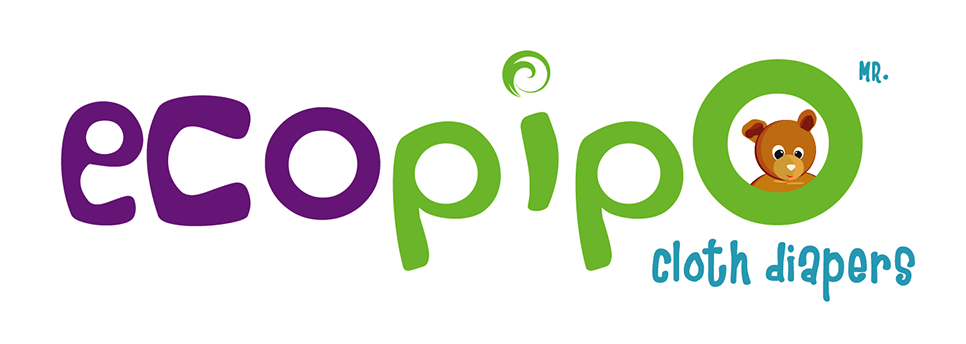Parents’ decisions about whether to use disposable or cloth diapers are often based on environmental concerns, convenience and cost. But what do cloth diapers really save?
Do Cloth Diapers Save Families Money?
They don’t, says Nicole Kaeding, an economist in Washington D.C. and mother of a 15-month-old daughter. At least not immediately.
In Kaeding’s analysis, the cloth diapers do not pay off in the first year. The savings is only recognized in the second year and compounds with each additional child.
She was ambivalent about using cloth diapers until she did the math and realized that over time she could save money.
Kaeding estimates that disposable diapers are 25 to 30 cents each, while her cloth diaper inserts run about 7 cents a diaper. Using about seven diapers a day, that is a savings of about $1.50 to $2 a day using cloth diapers.
Hooray, she thought. I’m saving $600 a year over disposables.
But wait. There are the upfront costs to get cloth diapering going.
There is an initial outlay of about $500 to get up and running with cloth diapers. (Kaeding uses a higher-end more durable cloth diaper with inserts, but estimated a family could get going with pre-fold cloth diapers for less.)
Still, given $500 in initial costs, plus an additional $5 a month in water and $5 a month in electricity to wash all these bum-riders, there’s no real advantage to cloth.
“The savings in year one, is basically, net zero,” Kaeding says. “But in the second year, this is where we start to save money.”
Since families don’t have the upfront expense of buying the diapers, all the savings is realized. And the gain continues with a second child, allowing for some wear-and-tear replacement costs.
“There’s no additional work and we are saving $1,000 to $1,200 by using cloth over the life of diapering our children,” she says.
That is real savings.
Do Cloth Diapers Save Families Time?
Even though Kaeding and her husband both work full time outside the home, she says she has built the preparation of cloth diapers into her daily routine. She says it takes 3 to 5 minutes of work to fold and prepare the diapers for her nanny the next day. She leaves out a wet bag and throws them in the wash when she gets home.
Some cloth-diapering parents sing the praises of not having to go out to the drugstore at 10 at night to get more, as one would need to with disposables. They just do a load of laundry.
But cloth diapers do not work for every family. And by some estimates as many as 95 percent of families opt for disposables.
When Chesney Fowler’s son was born, she was working 80 hours a week in her residency as a doctor and her husband was working 40 hours a week. Disposable diapers were the only option she could imagine working for her family.
During the first four months when she was going through diapers fast and furious, she said that she spent $62 a month for disposable diapers delivered regularly to her door – with a savings through Amazon Prime.
“I can’t say I’m passionate about disposable diapers,” Fowler says, “but I am passionate about the importance of sanity for parents with young children and doing what it takes to make things work.”
Concerns about convenience seem be divided.
Do Cloth Diapers Help The Environment?
Surely cloth diapers are better for the environment. Right?
Like many cloth-users, Elle Morton, an at-home mother with daughters who are 3-years-old and 21-months and a boy on they way, says she was motivated by cloth’s lower-impact on the environment and by supporting smaller and ethically minded businesses.
Although she says cost was not her primary concern, she is getting mileage out of her cloth diapers. Morton says a supply of 20 to 24 diapers will keep her family going. While there is some natural replacement as her children go through them, the savings for her after the first year are significant.
The cost savings is perhaps more significant than the environmental benefits. Neither the American Academy of Pediatrics or the Environmental Protection Agency takes a position on a preferred diapering method.
Laura A. Jana, MD, a pediatrician and co-author of the American Academy of Pediatrics book, Heading Home with Your Newborn: From Birth to Reality, said in doing the research that there is no clear environmental winner. Disposables take more raw materials to create, fill landfills and degrade slowly. But cloth diapers require water and electricity for cleaning and commercial diaper services require fuel for delivery trucks.
Right now the environmental benefits are contested and unclear, at best.
Families will have their own personal reasons for picking sides in the diaper wars between cloth and disposable. But know that the only clear advantage for cloth diapers seems to be in cost. And only if you stick with them into year two, and perhaps extend their life diapering other children. The rest is a wash.

